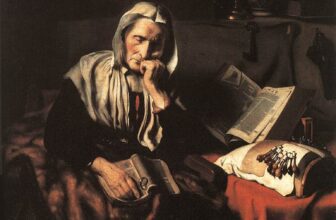
What does the lacemaker represent?
The concept of the lacemaker evokes a multitude of meanings and representations, transcending its literal depiction of a person crafting delicate lace. It is an emblem of intricate artistry, patience, and dedication. To fully understand what the lacemaker represents, one must delve into its historical, cultural, and symbolic connotations.
Historical Significance of Lacemaking
Lacemaking is an ancient craft, with its roots tracing back to the late 15th and early 16th centuries in Europe. Originating in regions such as Flanders, Italy, and France, lace became a coveted textile, admired for its beauty and the labor-intensive process required to create it. Lacemakers were often women, and their work was integral to the fashion and economy of the time. These women were seen as skilled artisans, contributing to a tradition that combined utility with aesthetic appeal.
In many European villages, lacemaking was not just an art form but a means of livelihood. Entire communities were built around the craft, with generations passing down the knowledge. Lacemakers symbolized the preservation of heritage, as their hands wove threads of history into intricate patterns. Their work demanded precision and immense focus, reflecting the values of perseverance and meticulous attention to detail.
Symbolism of the Lacemaker
Beyond the historical context, the lacemaker carries profound symbolism. The act of making lace is often likened to weaving the threads of life. Each knot, loop, and pattern represents choices, relationships, and experiences. This metaphorical aspect portrays the lacemaker as a creator of life’s tapestry, weaving together disparate elements into a cohesive and meaningful whole.
The lacemaker’s diligence and patience symbolize resilience and dedication. In an age where speed and efficiency dominate, the slow and deliberate pace of lacemaking reminds us of the value of craftsmanship and the beauty found in taking time to create something meaningful. It serves as a counterpoint to modern-day instant gratification, highlighting the rewards of sustained effort.
Artistic Representation
One of the most iconic artistic depictions of a lacemaker is Johannes Vermeer’s painting, “The Lacemaker.” Created in the 17th century, this masterpiece encapsulates the essence of focus and serenity. The young woman in the painting is engrossed in her work, her concentration almost tangible. Vermeer’s use of light and texture underscores the delicacy of the craft and elevates the lacemaker to a symbol of quiet devotion and artistry.
The painting also invites viewers to reflect on the juxtaposition between the simplicity of the subject and the complexity of her task. This duality mirrors the human experience, where seemingly ordinary lives are imbued with extraordinary depth and significance through their actions and passions.
The Lacemaker in Literature and Culture
In literature, the lacemaker often appears as a figure embodying both vulnerability and strength. Stories of lacemakers highlight their resilience in the face of adversity, whether economic hardship, societal constraints, or personal struggles. They are portrayed as unsung heroines, whose silent contributions leave an indelible mark on their communities and cultures.
Culturally, the lacemaker represents a connection to tradition and a reverence for skill. In a world increasingly dominated by technology, the craft of lacemaking serves as a reminder of humanity’s capacity for creativity and the importance of preserving cultural heritage. Lacemakers are often celebrated at festivals and in museums, where their work is showcased as both art and historical artifact.
Modern Interpretations
In contemporary times, the lacemaker has taken on new meanings. As the craft of lacemaking has diminished in practicality due to industrialization, it has gained a symbolic role as a representation of slow living and mindfulness. The act of making lace is now seen as a meditative practice, encouraging individuals to focus on the present moment and find joy in the process of creation.
Moreover, the lacemaker represents the empowerment of women through art. While historically tied to traditional gender roles, modern interpretations celebrate the lacemaker as a pioneer of feminine creativity and strength. The resurgence of interest in handmade crafts and sustainable practices has also brought renewed attention to lacemaking, positioning it as a symbol of eco consciousness and intentional living.
Lessons from the Lacemaker
The lacemaker teaches us valuable lessons about life and creativity. The intricate patterns of lace remind us that beauty often lies in complexity and detail. The patience required for the craft underscores the importance of persistence and the rewards of dedication. The historical and cultural significance of lacemaking highlights the value of preserving traditions while adapting them to contemporary contexts.
Ultimately, the lacemaker represents the power of human hands and minds to create something both functional and beautiful. It is a celebration of the intertwining of art and life, where every thread matters, and every knot contributes to the whole. Whether seen through the lens of history, art, or modern interpretation, the lacemaker stands as a timeless symbol of creativity, resilience, and the enduring human spirit.
Where is the lacemaker in Louvre?
The confusion surrounding The Lacemaker’s location likely arises from the prestige associated with the Louvre in Paris. The original Louvre Museum is home to iconic artworks such as the Mona Lisa and Venus de Milo, making it a must-visit destination for art lovers. However, the Louvre-Lens, which opened in 2012, also holds a remarkable collection of art and aims to make the treasures of the Louvre more accessible to people outside Paris.
The Lacemaker” painting is housed at the Louvre Museum in Paris, France. Specifically, the painting can be found in the Richelieu Wing, Room 837, which is dedicated to Dutch and Flemish paintings.
The Louvre-Lens: Home to The Lacemaker
Situated in Lens, a city in the Hauts-de-France region of northern France, the Louvre-Lens is a modern museum with a focus on showcasing art in innovative and educational ways. Its central gallery, known as the Galerie du Temps (Gallery of Time), presents artworks from ancient to modern times in a chronological sequence. This design encourages visitors to explore connections between different periods and cultures.
The Lacemaker is housed in the Louvre-Lens as part of a rotating collection that includes many significant pieces from the Paris Louvre. While not always on permanent display, the painting has been exhibited here to broaden its reach and allow visitors outside the capital city to experience Vermeer’s genius firsthand.
Why Is The Lacemaker So Special?
Painted around 1669-1671, The Lacemaker is one of Vermeer’s smallest works, measuring just 24.5 by 21 centimeters (9.6 by 8.3 inches). Despite its size, the painting is celebrated for its extraordinary attention to detail. It depicts a young woman focused intently on her craft, creating lace with delicate precision. The composition highlights her concentration and the intricate tools of her trade.
Vermeer’s use of light and color in The Lacemaker is masterful. He employs soft, warm tones to illuminate the subject, creating a sense of intimacy and serenity. The brushstrokes are particularly remarkable, with Vermeer achieving a tactile quality in the lace and fabric, making the textures feel almost tangible.
Visiting The Lacemaker
If you wish to see The Lacemaker in person, checking the Louvre Lens website or contacting the museum directly is advisable, as the painting may occasionally be loaned to other institutions. The Louvre-Lens is easily accessible from Paris by train, making it an excellent day trip for art enthusiasts seeking to explore beyond the French capital.
In conclusion, while The Lacemaker is not in the Louvre in Paris, its presence in the Louvre-Lens reflects the museum’s commitment to sharing its treasures with a broader audience. Whether you are an art aficionado or a casual visitor, seeing this masterpiece in person is an unforgettable experience that connects you to the brilliance of Vermeer and the enduring allure of 17th century Dutch art.




